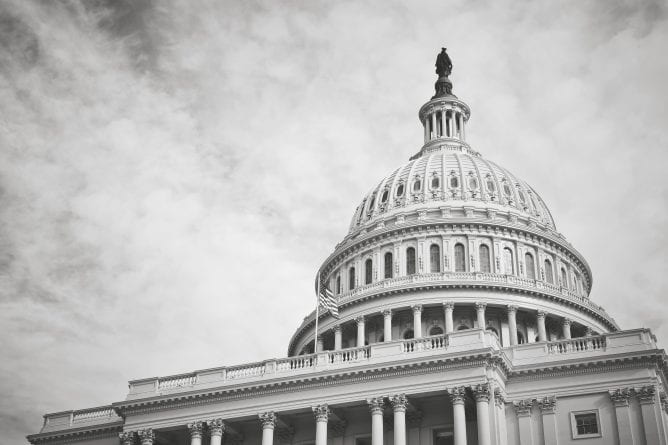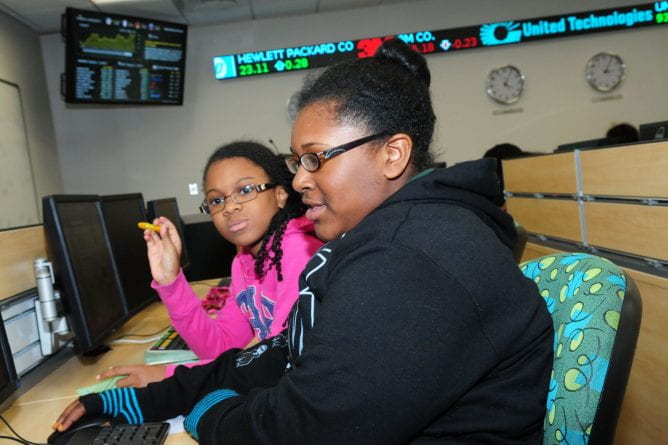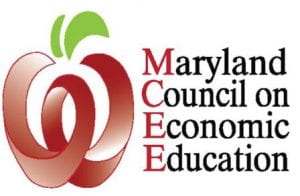A Modern Monetary Theory Perspective
by Dr. Shantanu Bagchi, Associate Professor of Economics at Towson University
“I am sorry sir, but your card was declined because of insufficient funds,” says the customer service representative on the other end of the line. “Please contact your bank and pay off some of your balance, and then place a new order.” Then, with a customary “thanks for your business,” the line goes dead. You are simultaneously furious and stressed out: what other charges are going to get declined? How did you manage to lose track of your credit card balance? As these thoughts swirl around in your mind, through the corner of your eye, you see news breaking on TV: “President Biden and Speaker McCarthy reach deal to increase debt ceiling and avert a U.S. default.”
For countless American households, making ends meet has been a challenge in the post-COVID economy. Rising food and gas prices and sticky wages have left many of us wondering how to square the two pieces of our personal budgets: earnings and spendings. Some have been able to tap their past savings (excess earnings over spendings) to pool over these difficult times, but many have had to resort to borrowing (excess spendings over earnings). And many have been forced to cut their spending to stay within their borrowing limits. With all this going on, how many of us have seen a news headline like that and not felt burned: how is it that the public must live on tight budgets because no one will lend them any more money, but the federal government can just increase its debt ceiling and avoid default?
In general, the American public has believed in the principle that government debt should work much the same way as household debt (barring differences in default risk), a belief that can perhaps be traced back to the idea of “Ricardian Equivalence.” This idea, named after David Ricardo, the great British political economist of the early nineteenth century, avers that if everyone plays by the rules of credit markets, households will know that government tax cuts today will have to be financed through increased borrowing today. This increased borrowing, in turn, will need higher future taxes to pay off the accrued debt. Therefore, if the government racks up larger and larger deficits over time, it will take larger and larger future taxes to pay off the accrued debt.[1] So, if we are to spare future generations from having to pay these higher taxes, we must somehow limit the government’s ability to borrow money.
On the face of it this argument makes a lot of sense, but there is really no way to square it with reality: Congress has revised the debt ceiling 78 times since the 1960s. It turns out that the key fallacy in this argument is that it applies concepts from personal finance (i.e. households’ budgets) to evaluate public finance (i.e. the government’s budget). The two are similar only so far that the word “finance” appears in both. For households’ budgets (or personal finance), earnings typically happen before expenditures are made. Our decisions regarding which restaurants to eat at, which summer camps to send our kids to, and which coupons to use for which prescription drugs usually happen after we have some idea of our earnings. If unexpected things happen, we respond by engaging in short-term borrowing, such as temporarily running a credit card balance, or by breathing a sigh of relief that we were able to put some money away as savings. For the government’s budget (or public finance), the timing structure is very different. Roads and bridges must be built, the military must be hired, equipped, and trained, and social insurance payments must be made before the money needed to pay for them has been secured. In other words, unlike our personal budgets, earnings usually trail expenditures in the government’s budget.

The government’s ability to do things in the exact reverse order from the public is by no means an anomaly; it is by design. And the key to this design is the federal government’s unique position in the financial system: its ability to issue IOUs of dollars, and its ability to issue the very dollars that will be used to pay off those IOU’s. This insight is the foundation of a new philosophy on monetary policy in a modern capitalist economy: the Modern Monetary Theory (MMT). The basic premise of MMT is that in a world with low interest rates, loans are effectively free, so the federal government can choose to manipulate its debt however it may see appropriate.[2] And even though this idea may sound outlandish, politicians on both sides of the aisle understand this very well: over the last few decades, they have repeatedly revised the federal debt ceiling to avoid “default.”[3] In fact, from an MMT perspective, the federal government’s debt is not even a real thing, so “default” is not even a meaningful idea.
Unfortunately, the American public does not have the luxury to manipulate our personal debt, because no financial institution will give us loans in dollars and allow us to pay them back with something other than dollars. If they did, none of us would ever end up with insufficient funds to make our purchases. The bottom line: using concepts from our personal finance to understand the Federal government’s finances is a misguided endeavor, and all this cacophony about the federal’s government’s debt ceiling and possible “default” is nothing more than sensational TV.
This article represents solely the opinions of its author. This article is part of the college’s The Exchange series which offers readers in-depth articles and op-eds written by our faculty with fresh perspectives and innovative ideas related to business, the global economy and society.
Footnotes:
[1] In macroeconomics, debt is a “stock” variable, which is essentially a cumulative measure of deficits, which is a “flow” variable.
[2] Most industrialized economies of the world have experienced persistently low interest rates at least since the 1980’s, until the aftermath of the COVID-19 pandemic.
[3] https://www.npr.org/2023/04/29/1172894580/congress-has-revised-the-debt-ceiling-78-times-since-1960-a-financial-historian-








